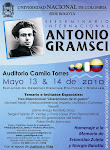En este reporte hay una seria advertencia sobre la grippe aviar, y la polémica entre científicos con respecto al virus H5N1. Y se hace a propósito un recuerdo con la "Spanish flu" de 1918 que fue catastrófica. Gracias a Luis Mejía, por compartir este texto. N d la R.
Bird-flu
Flown the coop
Controversial flu research is published
Jun 23rd 2012 | NEW YORK
| from the print edition
The prospect of a highly contagious H5N1 virus is scary. It can already hop nimbly from bird to bird, but is less acrobatic in humans. Some fear that if it ever adapted, the “Spanish flu” of 1918, which is reckoned to have killed as many as 100m people, could seem like a common cold by comparison. Of the 600 cases of H5N1 infection diagnosed since 2003, almost 60% have been lethal.
Dr Fouchier, of the Erasmus Medical Centre in the Netherlands, and Yoshihiro Kawaoka, of the University of Wisconsin-Madison, set out to learn which mutations might inspire H5N1 to speed from man to man. In December an American advisory board urged Science and Nature to publish redacted versions of their papers. After a self-imposed moratorium on research, opinion tilted towards full publication. It would, some argued, improve surveillance and speed the development of new drugs. Furthermore, publishing redacted work seemed impractical. By the end of April American and Dutch authorities had removed the last barriers to publication.
Dr Kawaoka’s paper, the less controversial of the two, was published in May in Nature.
Dr Kawaoka created a hybrid virus with H1N1, the strain that led to the
2009 outbreak. Just four mutations in an
engineered version of
haemagglutinin, the protein that helps H5N1 latch onto host cells,
resulted in a virus that spreads easily from ferret to ferret (the human
proxies in such tests). Dr Fouchier took a different approach. Most
pandemics of the past century came from a mixing of animal and human flu
viruses. Dr Fouchier wanted to understand whether H5N1 could become
highly contagious without such mixing. The answer, his research
suggests, is yes.Three mutations are already known to make H5N1 more at home in human hosts. The first two, Q222L and G224S, modify haemagglutinin to help the virus attach to the surface of mammals’ cells. The third mutation, E627K, makes the virus more likely to replicate. Dr Fouchier and his colleagues introduced the three mutations into an Indonesian strain of H5N1, then tested the virus in ferrets.
On its own, the mutated virus did little. Things got interesting when
swabs were used to pass the virus from one ferret’s nose to another’s.
After four such passages, the virus was better able to replicate. By the
tenth it could spread through the air. The genomes of the viruses in
each ferret had only five common mutations; the three introduced and two
more, H103Y and T156A, which influenced haemagglutinin. The study was
not all doom and gloom. None of the ferrets infected with the airborne
virus died, and it seemed susceptible to drug treatment.
An accompanying paper in Science tries to
estimate whether such mutations might appear simultaneously in nature.
Better predictions will require more work. American regulators are
trying to create a system to weigh the risks of similar research.
Anthony Fauci, head of the National Institute of Allergy and Infectious
Diseases, hoped the World Health Organisation would discuss policies to
oversee such research in July. But the meeting has been postponed. One
controversy is over, but what comes next is as blurry as ever.



No hay comentarios:
Publicar un comentario